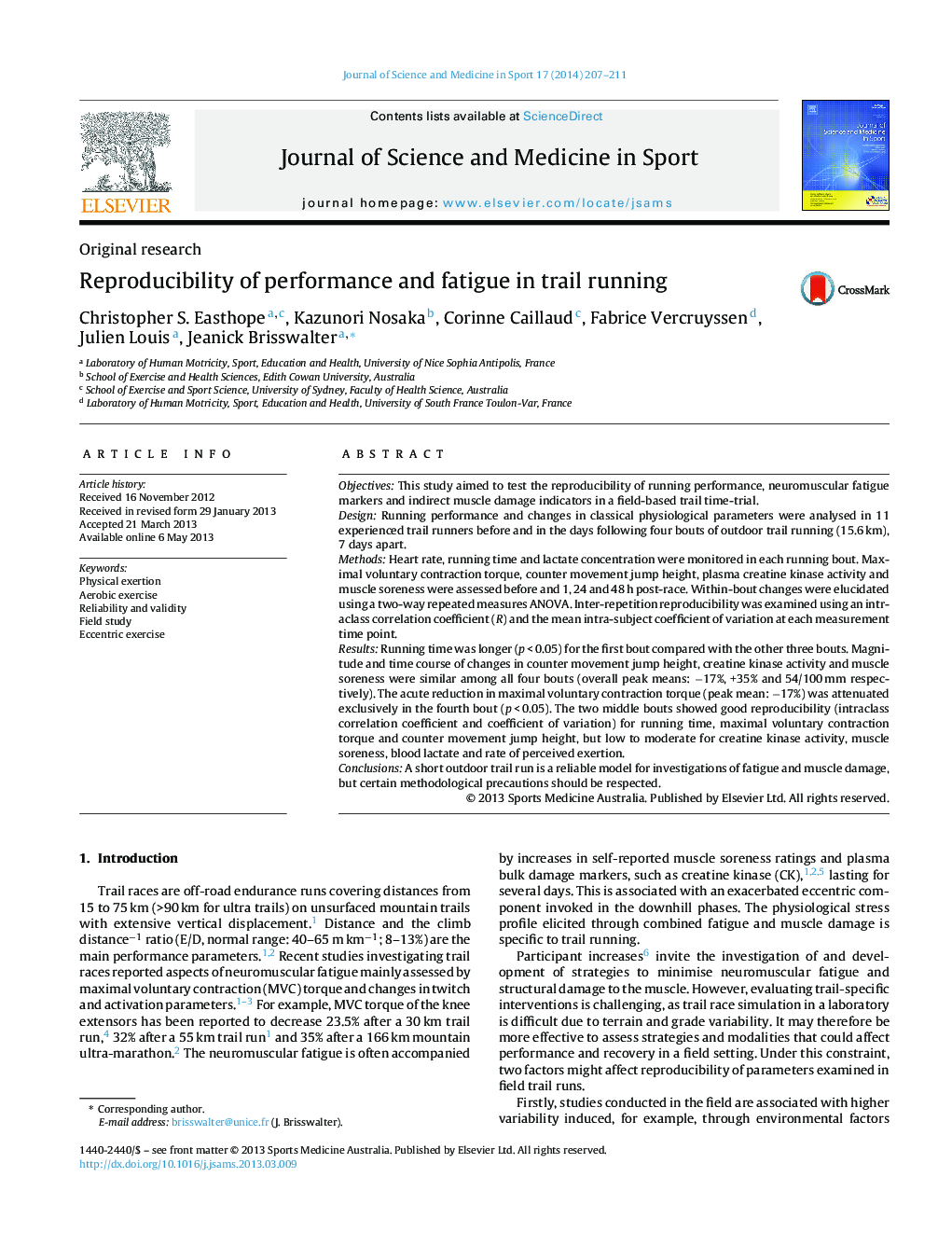| Article ID | Journal | Published Year | Pages | File Type |
|---|---|---|---|---|
| 2704525 | Journal of Science and Medicine in Sport | 2014 | 5 Pages |
ObjectivesThis study aimed to test the reproducibility of running performance, neuromuscular fatigue markers and indirect muscle damage indicators in a field-based trail time-trial.DesignRunning performance and changes in classical physiological parameters were analysed in 11 experienced trail runners before and in the days following four bouts of outdoor trail running (15.6 km), 7 days apart.MethodsHeart rate, running time and lactate concentration were monitored in each running bout. Maximal voluntary contraction torque, counter movement jump height, plasma creatine kinase activity and muscle soreness were assessed before and 1, 24 and 48 h post-race. Within-bout changes were elucidated using a two-way repeated measures ANOVA. Inter-repetition reproducibility was examined using an intraclass correlation coefficient (R) and the mean intra-subject coefficient of variation at each measurement time point.ResultsRunning time was longer (p < 0.05) for the first bout compared with the other three bouts. Magnitude and time course of changes in counter movement jump height, creatine kinase activity and muscle soreness were similar among all four bouts (overall peak means: −17%, +35% and 54/100 mm respectively). The acute reduction in maximal voluntary contraction torque (peak mean: −17%) was attenuated exclusively in the fourth bout (p < 0.05). The two middle bouts showed good reproducibility (intraclass correlation coefficient and coefficient of variation) for running time, maximal voluntary contraction torque and counter movement jump height, but low to moderate for creatine kinase activity, muscle soreness, blood lactate and rate of perceived exertion.ConclusionsA short outdoor trail run is a reliable model for investigations of fatigue and muscle damage, but certain methodological precautions should be respected.
